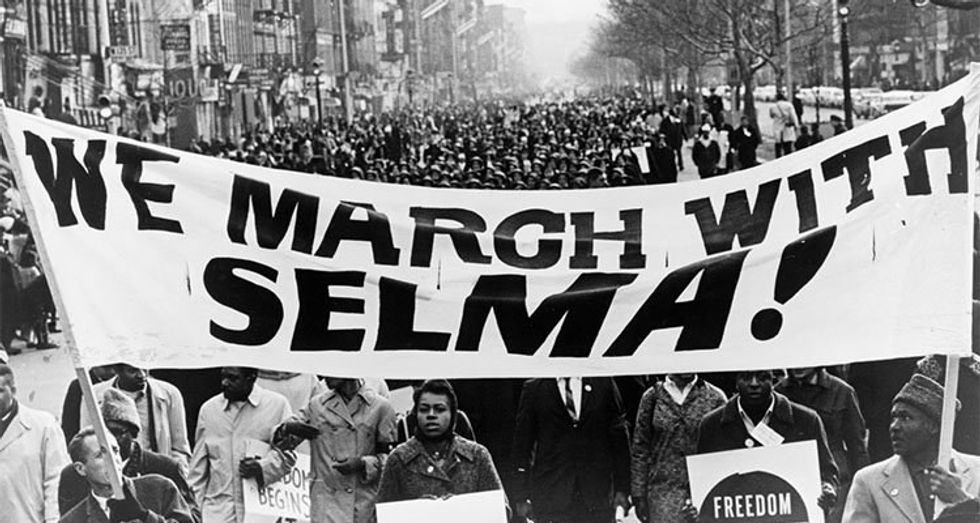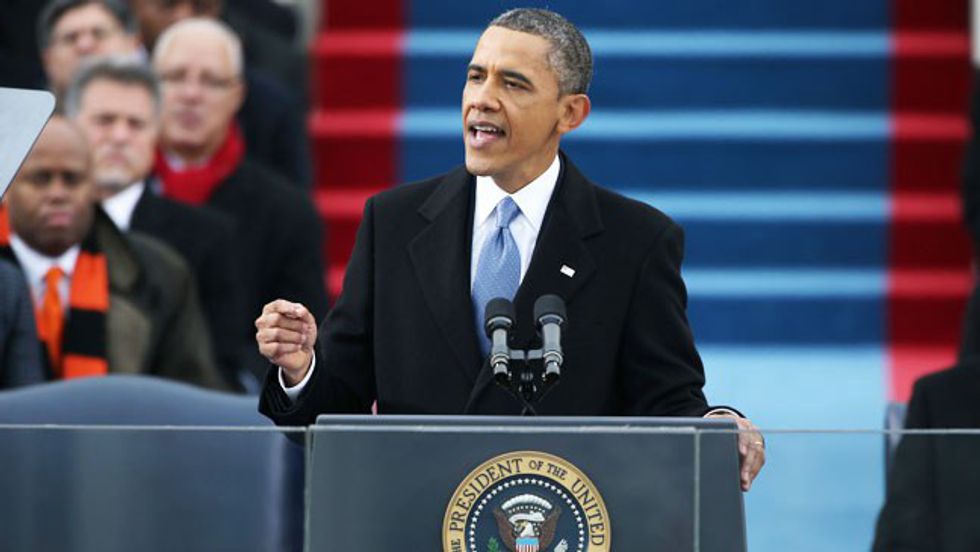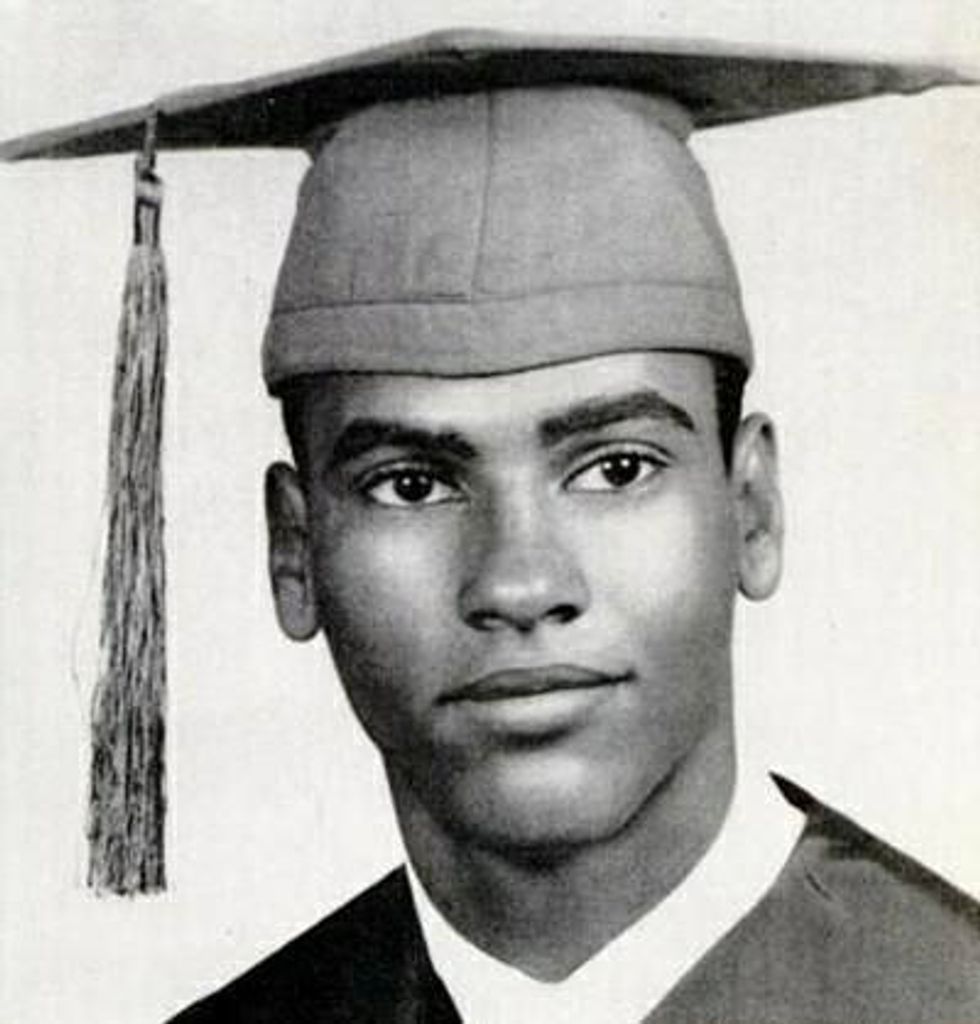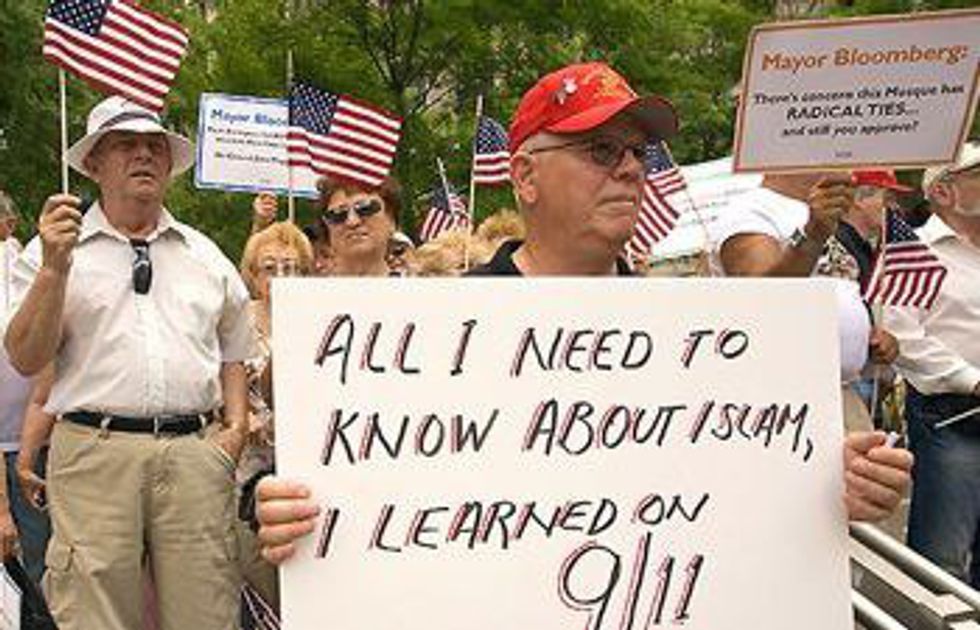Nelson Mandela, may he rest in peace, was one of the most renowned advocates for equality in recent memory. Just as he said he would, he fought to achieve and maintain fair and equal treatment for those who have long been perceived as lesser beings. Much in the same way he vehemently renounced racism, though, there are those who would die to preserve prejudice and a class structure molded by race relations. Racism is defined in the Merriam-Webster Dictionary as the “belief that race is the primary determinant of human traits and capacities and that racial differences produce an inherent superiority of a particular race.” Many naively believe that today, we live in a society that has evolved past prejudices and discrimination. This assertion is wrong. Yes, we have made progress. Yes, we have a black president. However, these facts do not deny the reality that men and women of color are still targets for discrimination in America, even in this day and age.
“I hate racial discrimination most intensely and all its manifestations. I have fought all my life; I fight now, and will do so until the end of my days.” –Nelson Mandela
Since the beginning of time, humans have generally always found some way to distance themselves from their peers; typically in a fashion that uplifted some while standing on the backs of others. Many shared this sentiment and the basis for continued prejudices was created, whether or not their reasoning was rooted in reality or perception. As stated in the Encyclopedia of Philosophy, there are many traits by which humanity divides itself, but none are more “morally reprehensible” and the “least substantially based” than racism. Some men have used religion in their favor; in Europe’s middle ages, many Western European countries invaded the Middle East in a series of wars known as the Crusades. The campaign gathered support under the guise of a holy war waged in the hopes of reclaiming Jerusalem from Muslims. More accurately, it was a coalescing of religious, militaristic, and economic priorities in which European Christians attempted to oppress and slaughter Islamic people because of a perceived inferiority based on religious beliefs. Some have used economic power; ancient India exercised a caste system and hierarchy which was quite distinguished from any other in the world. Those at the bottom of India’s social structure performed jobs such as plumbing and trash removal. These workers were deemed impure, and thus were known as “untouchables.” The so-called untouchables weren’t allowed in many public places, including temples where Indians worshiped. While this behavior seems incredibly wrong and distasteful, no change was made until the 1950’s, when legislation was passed in India to protect the lower members of the caste system. Feudal Japan was organized much like most of Europe, in which a shogun (king), ruled over daimyo (nobles), who controlled the samurai (knights). This structure was extremely rooted in tradition, familiarity, and responsibility. There was no room for social mobility, or in other words, movement among the different classes. The most prevalent and overt form of discrimination throughout recent history, however, has been racism.
The most notable divides in American history have been the racial tensions that have plagued the country since its origin, building up a head of steam and erupting in 1861 with the American Civil War, and again in the 1960’s during the civil rights movement. The American Civil War was fought between the North and the South; the North fighting for the freedom of slaves, while the South fought to maintain the status quo. Both causes were, in large part, economically motivated. The South heavily relied on agriculture and slave labor to farm their lands in order to support the economy. In comparison, the North was extremely industrialized and did not require slave labor nearly as much as their counterparts in the southern states. After landmarks such as the North’s victory and the Emancipation Proclamation, it was clear that America was taking steps in the right direction. This was bolstered by a much different Republican Party's Reconstruction efforts in the south.
Despite newfound freedom and efforts by both blacks and whites to develop a fair system, there were various growing pains for blacks in early America. They still endured racism and unequal treatment such as segregation and poor conditions in their designated schools, bathrooms and water fountains. During this time, blacks weren’t the only minority group being disrespected, but their plight is the one most often placed under a microscope. Immigrants from Asia and certain parts of Europe also experienced discrimination. One such example was the influx of Vietnamese fishers to Texas in the 1980’s who faced disdain because native Texans felt that immigrants would steal their jobs. In the 1960’s, Martin Luther King Jr. and John F. Kennedy spearheaded the African-American Civil Rights Movement, which was highlighted by various protests and instances of civil disobedience. Monumental victories such as the integration of public schools and equality in sitting areas on public transportation were earned through the efforts of civil activists. Since that time, situations for minorities in America have gotten progressively better when considered in a general sense. However, there are many slights against those of color which happen far too frequently on a subtle, more intimate scale.
After Barack Obama’s election in 2008, many Americans either ignorantly or wishfully believed that his inauguration would signal our arrival in a post-racial society. Proponents of the “post-racial society” theory pointed to the fact that President Obama was universally loved. Admittedly, citizens of all colors and creeds turned out to vote for him. Even during the election, however, Obama endured a firestorm when critics attacked him for statements made by his former reverend, Jeremiah Wright. Wright was caught on video, making incendiary remarks about white people. Obama’s connection to the reverend drew him into a controversy over reverse-racism. In response, Obama gave what may be considered the greatest political speech of his career, in which he did not focus particularly on one race or another. Instead, he chose to deliver a powerful speech in which he explained that the result of Wright’s comments displayed “the complexities of race in this country that we’ve never really worked through—a part of our union that we have yet to perfect.” Obama himself, in The Audacity of Hope, alleges that the conflict between races has too often been boiled down to black and white relations, whereas it must always be expanded to include Latinos and Asians, as well as any and every other minority group. Not only is the president a lightning rod and binding force for race relations, he also bridges a gap between generations. Millennials are becoming increasingly open-minded and diverse, willing to accept all on the basis of their character, as opposed to their skin color. This is a stark contrast when compared to their parents and grandparents. Barack Obama is a president for the Millennial, and together, we're working to lead previous generations to the epiphany that race should not, nor should it have ever been a defining factor in judging an individual.
Since momentous events such as the Civil Rights Movement and President Obama’s election, it is certainly clear that race relations within the United States are steadily improving. However, racism still occurs every single day whether it’s on a personal level, or it's a matter of institutional or systemic racism. Robin Yaesha Deane, a black writer for the Los Angeles Times, recounts a time when she was searching for a hair product in a drug store. As opposed to being in the aisle with other such merchandise, she found that the hair products for minorities were locked up in the front of the store for fear that they might be stolen. It is these instances that minorities and their supporters point to as signs of continued discrimination in America, even today. However, certain analysts argue that even though racism does exist, these situations should be viewed with a particular perspective. These subtle acts of racism are exactly that, subtle. Blacks and other minorities more than likely would have faced even worse treatment 50 years ago. They allege that racism is still continually on a downward trend, as evidenced by public polls in which white Americans have become much more amicable and open minded when it comes to blacks in recent decades. Even as far back as the '90s, 90 percent of whites would have been willing to vote for a qualified black candidate. The devil’s advocate may argue back that it’s easy to make such a claim in an anonymous survey, but the outcome may be very different come election day. While most would think of a specific event between two individuals when thinking of racism, institutional racism is just as prevalent today. Institutional racism is categorized as discrimination that has been so deeply ingrained into political and social and economic institutions. As an example, a healthcare network may be organized in such a way that it denies racial minorities fair and sufficient treatment by excluding sections of a city where racial minorities happen to live from said network. In these cases, it is possible for the structure and its policies to be racist, whereas those who implement the system may not necessarily be so. It is argued that this form of subtle racism has also been displayed within the educational system, through the use of particular standardized tests.
As referenced earlier, there were those who were willing to die if it meant preserving the status quo. Men of this ilk formed the Ku Klux Klan, an organization predicated on a white supremacist, anti-Semitic and anti-homophobic beliefs. The Klan has been on again and off again since 1865 when it was founded by six veterans of the Confederate Army. They formed the group as an insurgent response to Reconstruction efforts in the South. Although the Klan has died out twice already at different points in history, they still exist today (on a much smaller scale.) At its peak, the Klan boasted a healthy six million members. Today, their membership rests somewhere between 5,000 and 8,000 members. Klan members used means that went outside of the law, such as excessive violence, to maintain control of a drastically changing social situation. They believed that if the law wouldn’t protect their superiority, fear mongering, assault and even murder would get the job done. Luckily, today’s incarnation of the Klan is not nearly as powerful as it once was, but its very existence proves the consistency of racism and the potency of pure hate. While the organization was extremely outspoken in their efforts to undo and undermine civil rights, they’re not alone in their sentiments. Recent history and various studies have shown that the conservative far-right are generally more inclined to oppose civil rights policies.
Over two centuries of volatile, racial prejudices eventually gave way to aggressive pushback by minority groups. The Black Panther Party was originally formed in 1966 by Huey Newton and Bobby Seale in an effort to protect black neighborhoods from police brutality. Before the group’s dissolution in 1982, they advocated self-sustainability for blacks and they promoted many admirable programs, such as “Free Breakfast for Children.” However, these efforts were undermined by the constant rumors and some truths of certain members’ criminal pasts and sometimes, current unscrupulous activity. While the party began with good intentions, certain sects grew into something far more sinister. It's alleged that founder Huey Newton even admitted while intoxicated, hours before his own death, to having willfully killed Officer John Frey in the midst of a struggle during a traffic stop; a crime on which Newton was released after three years because his conviction was reversed on appeal.
As much progress has been made, there are still pockets of this nation which social reform and progress have passed by. One such pocket of racism is the small town of Jena, Louisiana. Jena is an extremely poor town where blacks make up only 12 percent of the population. Segregation is still the law of the land in church, and even in the town’s cemetery. However, thanks to word of mouth and increasing media attention, Jena has slowly but surely become a Little Rock for the 21st century, a symbol of racial upheaval, and a lightning rod for controversy, debate and reform. Ever since the reforms of the 1960s, it seems there has been a counter-movement that has utilized subtle forms of racism and oppression in order to keep black citizens down. It’s found in the education and healthcare institutions. It’s found in the prison sentences that are 20 percent longer if you’re black, as opposed to a white citizen who has committed the same crime. It’s found in Jena, Louisiana. The setting is Jena High School; three black students ask permission to sit under a large tree in the yard known as “the White Tree.” The tree was typically used only by white students to shield themselves from the blazing Louisianian sun. Their principal responds by stating that the students could sit wherever they pleased. The three students took this opportunity to sit underneath the tree and shade themselves from their sweltering heat. The next day, multiple nooses along with the school colors were found hung from the tree. The culprits, three white students, were quickly expelled. Even quicker, they had their expulsions overturned. In response, tensions escalated and various incidents followed, including a fire on campus, physical altercations between black and white students, black students exercising their first amendment rights to protest and the assault of Justin Barker, a white student at the school, by six black students who came to be known as the "Jena Six." The LaSalle Parish District Attorney, Reed Walters, arrived at the school with police and rhetorically asked if the students could see his pen. He then threatened, “I can end your lives with a pen.” You might think a scene like this took place in 1860’s, but no, this horrible injustice took place only 10 years ago, in 2006. District Attorney Walter’s threat was one example in which not only the institution was inherently biased, but the implementer was as well.
As globalization continues and America becomes an ever-growing presence in the global community, Americans will have to continue to adapt. To this point in history, we’ve only changed the ways in which we’re racist. Instead of overtly protesting integration, many opponents of the idea argue that immigrant children are a drain on the educational system due to the amount of money spent on ESL classes. In addition, Americans today are more likely to find a correlation between those with dark skin and foreigners, perceiving these people as threats, especially in a post-9/11 world. On Sept. 11, 2001, the US faced the worst terrorist attack in its history since Pearl Harbor in 1941. The World Trade Center in New York was attacked when Islamic terrorists hijacked a flight and steered the plane into the North tower. A second plane was flown into the South tower approximately 17 minutes later. Another plane was also flown into the Pentagon, while the last craft crashed in Shanksville, Pennsylvania after passengers tried to subdue the hijackers. In the wake of the tragedy, there was a sharp rise in racism against those of Middle Eastern descent. In the almost 15 years since the attack, people of color have been subject to impromptu searches and seizures, as well as various other forms of legal and personal discrimination.
I spoke with a handful of people of various different ages and ethnicity and it allowed me to gain a greater perspective of what individual Americans have experienced in their lives, in regards to race relations. One of the individuals I spoke to, who is of Caucasian and Filipino descent explained that because he grew up as a skater in the '80s and '90s, he often faced prejudiced statements from his peers who happened to be minorities. These statements included, but were not limited to “Fuck you, white pride skater.” He and his then-girlfriend, who happened to be Korean, would face stares of disapproval if they held each other’s hands as they walked through Korea Town. Another interviewee, of Caucasian descent, explained that she believes that racism still very much exists, especially within the educational and law enforcement sectors. She believes that continued racism establishes a “superiority complex for racial majorities” and continues the struggle for racial minorities. One young woman provided excellent insight into what many young Indian-Americans are facing: “As a Sikh American living in a Post 9-11 America, I firsthand experienced many forms of racism due to the misinformed and uneducated assumptions people were making in identifying terrorists. From my name being made fun of, to my Sikh community being mocked and falling victim to countless hate crimes, I have experienced and seen numerous cases of racism here in America.” She goes on to explain how her own plight has made her racially sensitive to the injustices that others still have to endure. The mixed American man mentioned earlier believes that racism will be here for the foreseeable future. “One of my favorite Hip-Hop groups said it best, 'De La Soul is here to stay like racism.’ It’s not going away anytime soon." In contrast, the self-described Sikh American woman offers a somewhat more optimistic view and details how we can potentially achieve a post-racial society. “Until the population as a whole is educated on racial sensitivity and encouraging people to educate themselves, racism is most likely to exist in society.” She believes that through proper education, we can eventually achieve a society in which racism is not such a large part of our everyday lives.
In memory of the late Nelson Mandela, we should all strive to live a little more like him, and fight every day of our lives to maintain equality. Racism is synonymous with ignorance and idiocy, and it needs to be annihilated from the American mainstream; gone, but never forgotten. To forget would risk repeating past mistakes, and such a grievance is one that America cannot afford. While we have collectively achieved many monumental victories throughout the decades, there is still work to be done. We must continue to fight for the Jena, Louisiana and children being discriminated against by the ones meant to educate them and the citizens being unfairly criminalized and demonized far too often. We must persevere. More importantly, we must progress.

























